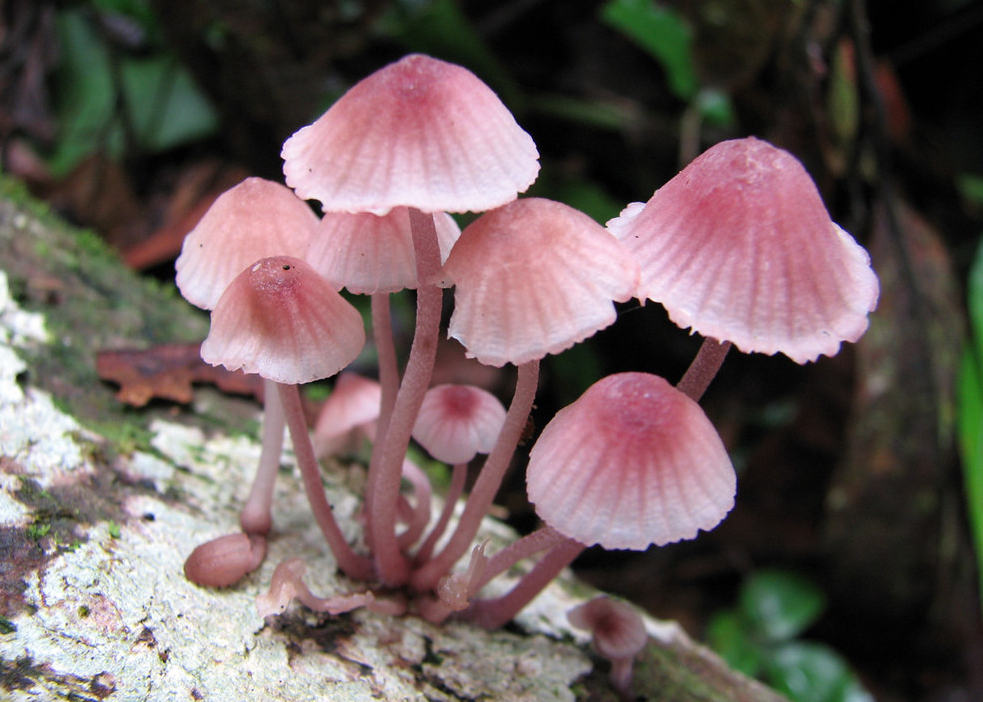The mere mention of it conjures images of damp basements, musty attics, and a lurking sense of biological unease. But beyond its unsightly presence, mold harbors a potential threat to our health, one that might be lurking closer than you think – high blood pressure.
Can mold cause high blood pressure? The impact of mold exposure on our well-being is a complex and multifaceted issue. While respiratory problems and allergies often steal the spotlight, research suggests a more sinister link between mold and cardiovascular health, specifically, the possibility of elevated blood pressure.
Unraveling the Mold-Blood Pressure Connection
The suspected culprit in this drama is a class of fungal toxins known as mycotoxins. These microscopic nasties, produced by certain mold species, can wreak havoc on our systems when inhaled or ingested. Their nefarious deeds include:
- Inflammation: Mycotoxins trigger an inflammatory response in the body, leading to a cascade of reactions that can stiffen blood vessels and raise blood pressure.
- Endothelial Dysfunction: The delicate lining of our blood vessels, called the endothelium, plays a crucial role in blood flow regulation. Mycotoxins can damage this endothelium, making blood vessels less elastic and contributing to high blood pressure.
- Hormonal Disruption: Some mycotoxins can interfere with the delicate hormonal balance in our bodies, potentially impacting hormones like aldosterone, which plays a role in blood pressure control.
The Evidence
While the link between mold and high blood pressure is still emerging, several lines of evidence lend credence to this theory:
- Observational Studies: Studies have shown a correlation between mold exposure in homes and workplaces and an increased risk of developing high blood pressure.
- Animal Studies: Research on animals exposed to mycotoxins has demonstrated a rise in blood pressure and other cardiovascular complications.
- Biomarker Analysis: Studies have detected elevated levels of inflammatory markers and other indicators of cardiovascular stress in individuals with mold exposure.
Unmasking the Mold Culprits
Not all molds are created equal. While many commonly encountered household molds pose little threat, certain species are notorious for their mycotoxin production:
- Stachybotrys chartarum: This “black mold” is infamous for its potent mycotoxin production and has been linked to various health problems, including high blood pressure.
- Aspergillus fumigatus: This common mold can cause allergic reactions and respiratory issues, and some strains produce mycotoxins with potential cardiovascular effects.
- Penicillium chrysogenum: The fungus responsible for penicillin production, certain strains of Penicillium can also produce mycotoxins with inflammatory properties.

The Take-Home Message
While the evidence linking mold exposure to high blood pressure is still evolving, it’s prudent to be aware of the potential risks. If you suspect mold in your home or workplace, it’s crucial to address it promptly. Here are some key steps:
- Identify and Remove the Mold: Hire a professional mold inspector and remediation specialist to identify the mold species and safely remove it from your environment.
- Improve Ventilation and Reduce Moisture: Ensure proper ventilation in your home or workplace to prevent moisture build-up, which fuels mold growth. Address leaks and fix plumbing issues promptly.
- Monitor Your Health: If you have concerns about mold exposure and your blood pressure, consult your doctor. They can monitor your blood pressure and assess any potential health risks associated with mold exposure.
A Holistic Approach to Blood Pressure
Remember, mold is just one piece of the puzzle when it comes to high blood pressure. Maintaining a healthy lifestyle remains paramount for optimal cardiovascular health. Here are some key strategies:
- Eat a balanced diet: Focus on whole foods, fruits, vegetables, and lean protein while limiting processed foods, saturated fats, and added sugar.
- Engage in regular physical activity: Aim for at least 150 minutes of moderate-intensity exercise per week or 75 minutes of vigorous-intensity exercise.
- Manage stress: Chronic stress can contribute to high blood pressure. Practice stress-reduction techniques like yoga, meditation, or deep breathing.
- Maintain a healthy weight: Excess weight puts additional strain on your heart and blood vessels.
- Limit alcohol and tobacco use: Both alcohol and tobacco can raise blood pressure.
- Get enough sleep: Aim for 7-8 hours of quality sleep each night.
READ: Can You Take Nugenix with High Blood Pressure Medication?
Living in Harmony with the Fungal World
Mold is a ubiquitous presence in our environment, and complete avoidance is nearly impossible. However, by understanding the potential risks associated with certain mold species and taking proactive steps to address mold issues, we can create healthier living environments and safeguard our cardiovascular health. Remember, knowledge is power, and when it comes to mold and high blood pressure, awareness is the first step toward a healthier you.

Unanswered Questions and Emerging Research
While the link between mold exposure and high blood pressure is gaining traction, several key questions remain unanswered, leaving room for further exploration and research. Here are some of the burning issues demanding attention:
- Individual Susceptibility: Why are some individuals more susceptible to the cardiovascular effects of mold exposure than others? Is it genetics, pre-existing health conditions, or a combination of factors? Unraveling individual susceptibility could pave the way for personalized preventative measures.
- Dose-Response Relationship: What is the minimum level of mold exposure needed to trigger a rise in blood pressure? Understanding the dose-response relationship can help establish exposure guidelines and inform remediation strategies.
- Specific Mycotoxin Culprits: Which specific mycotoxins are the primary culprits behind the mold-blood pressure connection? Identifying the “bad actors” can guide targeted treatment and develop mitigation strategies that focus on specific toxins.
- Long-Term Health Effects: Does chronic mold exposure lead to sustained high blood pressure or contribute to the development of other cardiovascular diseases like heart failure or stroke? Investigating the long-term consequences of mold exposure is crucial for comprehensive health risk assessment.
- Role of the Immune System: How does the immune system interact with mycotoxins and influence the cardiovascular response to mold exposure? Understanding the immune system’s role could lead to the development of immunomodulatory therapies to mitigate the harmful effects of mold.
Emerging Research Frontiers
Beyond these unanswered questions, exciting research frontiers are pushing the boundaries of our understanding of the mold-blood pressure connection:
- The Gut-Brain-Blood Pressure Axis: Research suggests a potential link between gut microbiome composition, mold exposure, and blood pressure regulation. Exploring this gut-brain axis could open doors to novel microbiome-based interventions for managing mold-associated cardiovascular risks.
- Epigenetic Alterations: Epigenetics studies how environmental factors like mold exposure can alter gene expression without changing the DNA sequence itself. Investigating epigenetic changes induced by mold could shed light on long-term health consequences and potential therapeutic targets.
- Personalized Mycotoxin Detection: Developing biosensors or other rapid detection methods for specific mycotoxins could enable personalized monitoring of exposure levels and inform individualized prevention strategies.
The Road Ahead
The growing body of evidence linking mold exposure to high blood pressure demands a multi-pronged approach:
- Increased Public Awareness: Educating the public about the potential risks of mold exposure and promoting healthy indoor environments is crucial for primary prevention.
- Improved Diagnostic Tools: Developing accurate and accessible methods for mold identification and mycotoxin detection can aid in early diagnosis and timely intervention.
- Targeted Treatment and Prevention Strategies: Research into specific mycotoxin effects and individual susceptibility can pave the way for personalized interventions and targeted mold remediation strategies.
Unraveling the complex interplay between mold and blood pressure is an ongoing journey. By addressing the unanswered questions, embracing emerging research frontiers, and implementing proactive measures, we can mitigate the risks associated with mold and foster a healthier future for all.
Exploring the Wider Spectrum of Mold’s Health Impact
While the potential link between mold exposure and high blood pressure has captured our attention, it’s crucial to remember that mold’s impact on our health extends far beyond this single concern.
Like a devious puppeteer pulling the strings of various bodily functions, mold exposure can trigger a cascade of negative health consequences, affecting us from head to toe.
Respiratory Woes
The most common and well-known adverse effect of mold exposure is respiratory issues. Inhaling mold spores can irritate the airways, leading to symptoms like:
- Coughing and wheezing: The body’s attempt to expel the irritating spores.
- Sneezing and runny nose: An inflammatory response to the mold.
- Congestion and chest tightness: A narrowing of the airways due to inflammation.
- Difficulty breathing: In severe cases, mold exposure can trigger asthma attacks or worsen existing respiratory conditions.
READ: How to Prepare Chayote for High Blood Pressure?
Allergic Reactions
For individuals with mold allergies, exposure can trigger a range of allergic reactions, including:
- Itchy, watery eyes and runny nose: Classic hay fever-like symptoms.
- Skin rashes and hives: Localized inflammation triggered by the immune system.
- Eczema flare-ups: Existing skin conditions like eczema can worsen with mold exposure.
Neurological Concerns
Mycotoxins, those nefarious fungal toxins, can cross the blood-brain barrier and wreak havoc on our neurological system. Potential consequences include:
- Headaches and migraines: A common complaint among individuals with mold exposure.
- Fatigue and brain fog: Difficulty concentrating and feeling mentally sluggish.
- Memory problems and cognitive decline: In severe cases, long-term exposure may be linked to cognitive decline.
- Mood swings and anxiety: Mycotoxins can disrupt neurotransmitters, leading to emotional imbalances.
Immune System Disruption
Mold exposure can weaken the immune system, making us more susceptible to infections and inflammatory diseases. This weakened immunity can manifest in various ways, such as:
- Frequent colds and flu: Increased susceptibility to viral and bacterial infections.
- Autoimmune disorders: Some researchers theorize that mold exposure might play a role in triggering autoimmune diseases.
- Chronic inflammation: Mold-induced inflammation can contribute to various chronic health conditions like arthritis and fibromyalgia.
READ: Is Palo Azul Good for High Blood Pressure?
Digestive Discomfort
Mold’s reach extends even to our gut, potentially causing digestive problems like:
- Abdominal pain and bloating: Mycotoxins can irritate the digestive tract lining.
- Diarrhea and nausea: Inflammatory response to mold in the gut.
- Irritable bowel syndrome (IBS) flare-ups: Existing IBS symptoms might worsen with mold exposure.
Living in Harmony with Mold

As with any environmental exposure, complete avoidance of mold is unrealistic. However, by employing proactive strategies, we can minimize our exposure and mitigate its potential health risks:
- Identify and Address Mold Growth: Promptly address any visible mold growth in your home or workplace with the help of professionals.
- Prioritize Proper Ventilation: Ensure adequate ventilation and airflow to prevent moisture build-up, which fosters mold growth.
- Invest in Air Purifiers: HEPA air purifiers can help filter out mold spores and other airborne contaminants.
- Maintain a Healthy Lifestyle: A balanced diet, regular exercise, and good sleep hygiene bolster the immune system and overall health, making us more resilient to environmental challenges like mold exposure.
Remember, consulting a healthcare professional is crucial if you suspect mold-related health issues. They can assess your symptoms, conduct tests, and recommend appropriate treatment strategies.
Conclusion
Our journey through the labyrinthine world of mold and its impact on our health has unveiled a complex and multifaceted story. While the potential link between mold exposure and high blood pressure has captured the spotlight, it’s crucial to remember that mold’s reach extends far beyond this single concern.
From respiratory woes and allergies to neurological concerns and digestive discomfort, the spectrum of potential health consequences demands our attention.
However, amidst this complexity, a ray of hope shines through. By empowering ourselves with knowledge, adopting proactive strategies, and utilizing the wealth of resources at our disposal, we can navigate this intricate relationship with mold with greater awareness and resilience.
Resources & References
- https://www.mayoclinic.org/diseases-conditions/mold-allergy/symptoms-causes/syc-20351519?p=1
- https://www.who.int/publications-detail-redirect/9789289002134
- https://www.mold-help.org/
FAQs – Mold & High Blood Pressure
Can I get high blood pressure from mold exposure?
While research suggests a potential link between mold exposure and high blood pressure, it’s important to note that the evidence is still emerging and not conclusive. Additional studies are needed to establish a definitive cause-and-effect relationship. However, if you have concerns about mold exposure and your blood pressure, it’s crucial to consult your doctor for proper evaluation and diagnosis.
What types of mold are most likely to cause high blood pressure?
Certain mold species are known to produce mycotoxins, potent fungal toxins that can trigger various health problems, including potentially impacting blood pressure. Some of the mold species linked to mycotoxin production and potential health risks include Stachybotrys chartarum (black mold), Aspergillus fumigatus, and Penicillium chrysogenum.
How long does it take for mold exposure to affect blood pressure?
There’s currently no definitive answer to this question, as the potential impact of mold exposure on blood pressure likely depends on various factors, including individual susceptibility, the type and duration of exposure, and pre-existing health conditions. Some individuals might experience a rise in blood pressure soon after exposure, while others might develop changes more gradually over time.
Are there any specific symptoms I should look for if I’m worried about mold and high blood pressure?
Beyond high blood pressure, mold exposure can cause a range of symptoms, some of which might overlap with other conditions. However, if you experience respiratory issues like coughing, wheezing, and congestion, along with headaches, fatigue, and unexplained changes in blood pressure, it’s important to consult your doctor and discuss your concerns about potential mold exposure.
What can I do to protect myself from mold exposure?
The key lies in prevention and prompt action. Address any moisture issues in your home, ensure proper ventilation, and consider using air purifiers to filter out airborne mold spores. If you discover visible mold growth, don’t attempt to remove it yourself. Consult with a professional mold remediation specialist to ensure safe and effective removal.
Is there any treatment for high blood pressure caused by mold exposure?
If your doctor determines that your high blood pressure is linked to mold exposure, the first step will be addressing the mold issue in your environment. Depending on the severity of your blood pressure elevation and any pre-existing health conditions, your doctor might recommend lifestyle modifications, medications, or a combination of both to manage your blood pressure effectively.


